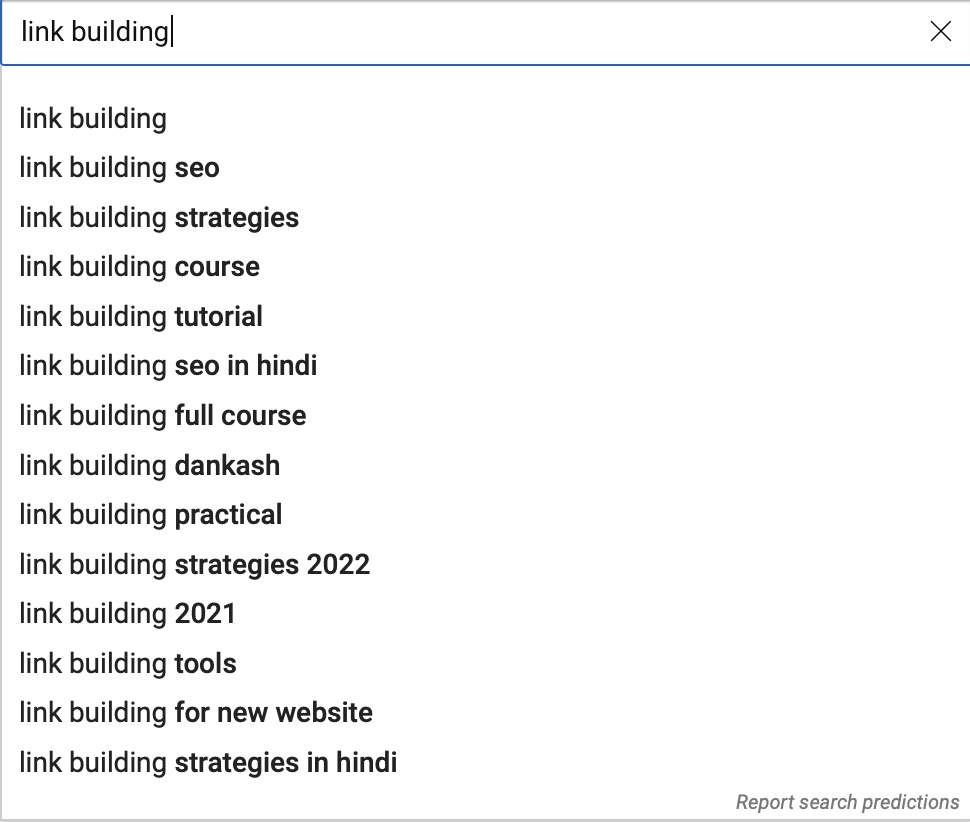The content creation process is a complicated one — especially if you want to get it right. As the content marketing landscape continues to evolve, the content creation processes continue to become more efficient and effective because of the different tools and software that are now available.
In this post, we have compiled a list of 20 such SEO and content marketing tools to help you refine your own processes. These tools are divided into five different stages of the content creation and marketing process.
1. Keyword and topic research

- Google Keyword Planner — Google Keyword Planner is one of the most common keyword research tools that online marketers use, primarily because it’s free. Over the years, Google Keyword Planner has become a tool more suited for Google Ads keyword research. However, it can still share some useful data for search engine optimization.
- SEMRush — If you want something a little more sophisticated and granular, you might want to use a paid keyword research tool. SEMRush is considered one of the best paid SEO and keyword research tools. With SEMRush, you can find out the monthly search volume and competition level of the keyword you are targeting, research other semantically related keywords to target, conduct a SERP analysis to see which pages are ranking on Google’s first page for this keyword phrase, see how many backlinks each competitor page has, and more.
- Ahrefs — Ahrefs is an excellent alternative to SEMRush if you want another option. While SEMRush is more geared towards keyword research, Ahrefs gained its popularity for its robust link-building tools. But that doesn’t mean that Ahref’s keyword research tool isn’t capable. Ahrefs vs. SEMRush is mostly a matter of preference as both tools are excellent.
- BuzzSumo — Before picking a topic, if you want to research how a topic is performing on social media websites, BuzzSumo is the perfect tool for that. With BuzzSumo, you can easily identify which topic gets the most traction, engagement, and social media shares. The easy-to-use tool allows you to browse topics by industry topics or keywords.
- Google Trends — The tools mentioned above mostly share data from the present and past. None of these tools indicate how a keyword might perform in the future. For that, you need Google Trends, which allows you to see search volume trends and predict how your chosen keyword might perform in the future.
- vidIQ — YouTube is the second biggest search engine, but we often neglect it. If you are producing video content, you also need search volume data from YouTube. vidIQ is a nifty Google Chrome extension that shares valuable insights and search volume data from YouTube.
For more information on how to do SEO for YouTube, check out our list of 10 keyword research and YouTube video optimization tools.
2. Content writing and editing

- Google Docs — Once your research is done, you need software to write content. You can use traditional tools like Microsoft Word or Apple Pages, but we recommend Google Docs. Google Docs offers plenty of functionality and add-on plugins to suit different types of needs. More importantly, it is an online tool with built-in autosave features (so you never lose your work, no matter what) and allows real-time collaboration with others.
- Grammarly — Once you have finished writing your content, it is time to start the editing process. Grammarly is the best tool currently available to identify and fix any grammatical mistakes. The premium version provides a lot more suggestions — including issues related to style and tone — but even the free version is quite capable. Grammarly also has a Google Chrome extension that can help you catch and fix issues in real-time.
- Hemingway app — If you want to refine your piece further and improve its readability, you should also run your content by the Hemingway app. It can help you identify lengthy and complex sentences, sentences that are hard to read and comprehend, and unnecessary uses of passive voices and adverbs.
- Flesch-Kincaid Readability Test tool — The Flesch-Kincaid Readability Test is a universally recognized test to check how easily readable your content is. We recommend running your content through this test to predict what the reading experience would be like for your readers. If your content is targeted to a certain age group, this quick test can also help you tailor your content to that age group.
- Notion — A blog needs a lot of posts. Such a volume can be hard to manage — especially if you are a team of multiple people. For that, you need capable, feature-rich, and easy-to-use project management software. We recommend Notion. Notion is extremely customizable and can be tailored to fit your needs.
- Trello — If you want something simpler, Trello is a good option that offers a Kanban view of your content calendar.
- Wrike — And if you want something more enterprise-level, Wrike could be perfect for you. It is best suited when multiple different teams are involved in the process, e.g., Content, SEO, Legal, Design, etc.
- Google Sheets — In case you don’t want project management software and just prefer something extremely simple yet customizable, Google Sheets is an excellent option for you.
3. Search engine optimization

- Yoast SEO — When the content is being published, you should ensure that the on-page SEO is up to par. The easiest way to do that is by using the free WordPress SEO plugin, Yoast SEO. Yoast SEO helps you set keyword-rich meta titles and meta descriptions. It also helps you optimize keyword usage throughout the web page. In addition, the plugin also informs you if you are not using the best on-page SEO practices regarding internal links, outbound links, total word count, image alt text, and more.
- Google PageSpeed Insights — Once the page is live, it is important to double-check that your web page is loading quickly enough. Google PageSpeed Insights can share valuable data and insights related to the loading speed of your web page — which is an important search engine ranking factor now.
4. Content promotion

- Buffer — Once your post is live, it is time to start promoting it. Buffer is one of the best, easiest, and most recommended social media sharing tools. With Buffer, you can easily schedule your post to be shared across various social media networks at specified times. You also get detailed insights and analytics to make data-driven decisions, e.g., identifying which social media platform works best for your audience, what is the best time to share content, etc.
- Hootsuite — Hootsuite is a relatively more advanced social media management tool with features such as automatic content scheduling, monitoring social conversations, trends, brand mentions, team collaboration, and more.
5. Analytics and measurement

- Google Analytics — Now that everything is done, it is time to see how your content is performing. Google Analytics is the defacto analytics and performance measurement tool for most website owners. It is easy to use, offers rich data and insights, and is simple to implement.
- Google Search Console — If you want more detailed information on your web page’s search engine performance, you should also look into Google Search Console. Unlike Google Analytics, Google Search Console can help you identify your page’s organic performance at a more granular level. For example, you can see the keywords or search terms that drive traffic to your web page, what is the average search engine ranking for your web page, how many impressions and clicks your page receives, what is the organic click-through rate, and more. After your page is live, with Google Search Console, you can also manually submit it for Google to index.
Conclusion
We hope this list of 20 SEO and content marketing tools helps you make your content creation processes more efficient and effective.
Let us know which tool is your favorite in the comment section below.
